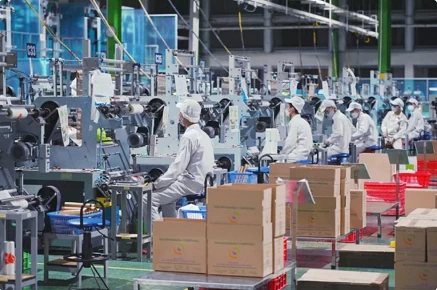
Vietnam among top three ASEAN countries for its industrial competitiveness
Latest
 |
| Vietnam among top three ASEAN countries for its industrial competitiveness: The proportion of labour in the industrial and service sectors is hoped to reach over 70%. (Source: VNA) |
The programme follows Resolution No 29 of the 13th Party Central Committee, on further promoting the industrialisation and modernisation of the country until 2030, with a vision to 2045.
As per the programme, the goal of the industrial sector's share in GDP should exceed 40%, with the manufacturing and processing industry alone accounting for around 30% of GDP.
The average per capita value added in manufacturing and processing industries per capita is expected to reach over 2,000 USD. The proportion of labour in the industrial and service sectors is hoped to reach over 70%.
To achieve this goal, the country aims to establish several large-scale industrial corporations and enterprises with international competitiveness in basic, priority and key industries. Additionally, the country plans to build and develop several domestic industrial clusters with international competitiveness, mastering some production value chains.
Top priority will also be given to developing export markets for industrial products especially key ones by taking advantage of free trade agreements that Vietnam has signed, supporting exporters to overcome technical barriers in import markets and gradually fostering exports of processed industrial goods to new outlets.
Facilitating supporting industries in areas such as smart electronics, cars, textiles and garments, mechanical and automation, biotechnology and hi-tech industries, along with applying import management measures by the commitments that Vietnam has made to support the development of important national industries, will be also included.
Meanwhile, the country will also pay keen attention to perfecting the legal framework to develop other major industries including metallurgy, mechanical engineering, chemical, energy and digital technology, in addition to developing raw material areas for industrial sectors typically garment and footwear.
Vietnam’s index of industrial production (IIP) surged 8.6% year-on-year in the first nine months of this year, extending the sector's recovery, the General Statistics Office (GSO) announced in its monthly report.
The nine-month IIP growth was driven by the manufacturing sector (up 9.8%), electricity production and distribution (up 11.1%) and water supply and waste-wastewater treatment (up 9.9%). Meanwhile, the mining sector fell 6.4%.
Some key industries with strong growth over this period included steel, up 27%, oil and gas (20%), fabrics (16%), NPK fertiliser (13%) and car manufacturing (12%).
The GSO noted that the number of workers in industrial enterprises as of September 1 increased by 1.1% month-on-month and by 5.2% year-on-year.
As of September 30, the inventory index for the processing and manufacturing industry was estimated to increase 5.2% compared to the previous month and 8.5% compared to the same period last year.

























